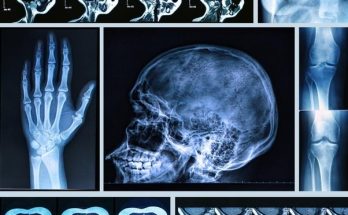Radiotherapy for Specific Cancer Sites
Radiation therapy plays a crucial role in treating many types of cancer. Here’s a look at some common sites and the specific considerations for radiotherapy at each:
1. Breast Cancer:
- Goal: To eradicate cancer cells in the breast tissue, chest wall, and lymph nodes while minimizing dose to the heart, lungs, and skin.
- Techniques:
- External Beam Radiation Therapy: 3D-CRT, IMRT, and VMAT are commonly used. Treatment can be delivered to the whole breast, or after lumpectomy, to the tumor bed.
- Brachytherapy: Can be used as a boost after external beam or as a partial breast irradiation technique.
- Considerations:
- Heart and Lung Sparing: Especially important for left-sided breast cancer. Techniques like deep inspiration breath-hold (DIBH) can help move the heart out of the radiation field.
- Skin Reactions: Radiation can cause skin redness, irritation, and sometimes blistering.
- Lymph Node Coverage: Radiation may be directed to the axillary, supraclavicular, and internal mammary lymph nodes.
- Image Guidance: IGRT is used to ensure accurate targeting, especially with DIBH.
2. Lung Cancer:
- Goal: To destroy cancer cells in the lung while minimizing damage to healthy lung tissue, heart, esophagus, and spinal cord.
- Techniques:
- External Beam Radiation Therapy: 3D-CRT, IMRT, and VMAT are used. SBRT is used for small, well-defined tumors.
- Considerations:
- Respiratory Motion: Lung tumors move with breathing. Techniques like 4D-CT scanning, gating, and tracking are used to account for this.
- Pulmonary Toxicity: Radiation can cause inflammation and scarring in the lungs.
- Esophageal Sparing: The esophagus is close to many lung tumors and needs to be protected.
- Image Guidance: IGRT is essential for accurate targeting, especially with tumor motion.
3. Prostate Cancer:
- Goal: To eliminate cancer cells in the prostate gland while preserving urinary, bowel, and sexual function.
- Techniques:
- External Beam Radiation Therapy: 3D-CRT, IMRT, and VMAT are used.
- Brachytherapy: Seed implantation (permanent) or HDR brachytherapy (temporary).
- Considerations:
- Rectal and Bladder Sparing: These organs are close to the prostate and need to be protected.
- Impotence and Incontinence: Potential side effects of radiation therapy.
- Image Guidance: IGRT is used to ensure accurate targeting, as the prostate can move slightly.
4. Head and Neck Cancer:
- Goal: To eradicate cancer cells in the head and neck region while preserving critical functions like swallowing, speech, and taste.
- Techniques:
- External Beam Radiation Therapy: IMRT and VMAT are preferred due to the complex anatomy.
- Considerations:
- Multiple Critical Structures: Brainstem, spinal cord, optic nerves, salivary glands, and others are in close proximity to tumors.
- Mucositis: Inflammation of the mucous membranes lining the mouth and throat is a common side effect.
- Xerostomia: Dry mouth due to radiation damage to the salivary glands.
- Image Guidance: IGRT is essential for precise targeting.
5. Gynecological Cancers (Cervical, Endometrial, Vaginal):
- Goal: To destroy cancer cells in the pelvis while protecting the bladder, rectum, and small bowel.
- Techniques:
- External Beam Radiation Therapy: 3D-CRT, IMRT, and VMAT are used.
- Brachytherapy: Intracavitary or interstitial brachytherapy is often used in combination with external beam.
- Considerations:
- Bowel and Bladder Sparing: Critical for minimizing long-term side effects.
- Vaginal Stenosis: Narrowing of the vagina can occur after radiation.
- Image Guidance: IGRT is used to ensure accurate targeting.
Other Cancer Sites:
Radiation therapy is also used to treat cancers of the brain, bone, soft tissues (sarcomas), skin, and other areas. The specific techniques and considerations will vary depending on the location and type of cancer.
General Considerations for All Sites:
- Treatment Planning: Careful planning is essential to optimize the dose distribution and minimize side effects.
- Patient Immobilization: Devices are used to help patients stay still during treatment.
- Side Effect Management: Radiation can cause various side effects, which are managed by the radiation oncology team.
- Follow-up Care: Regular follow-up appointments are important to monitor for recurrence and long-term side effects.



